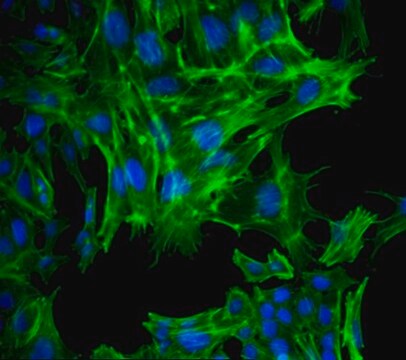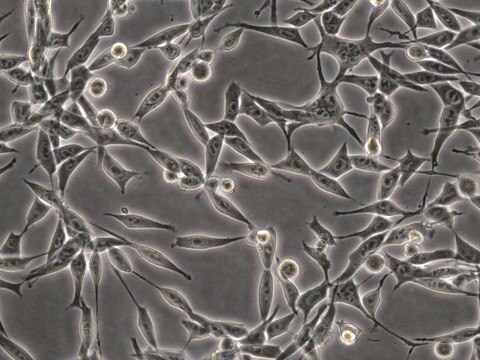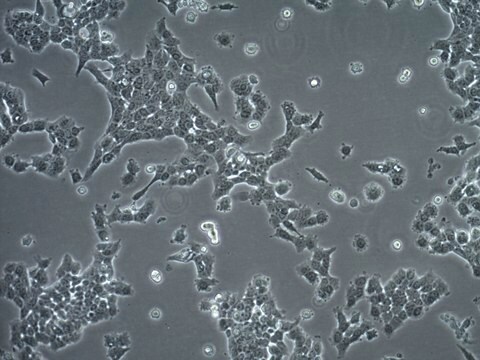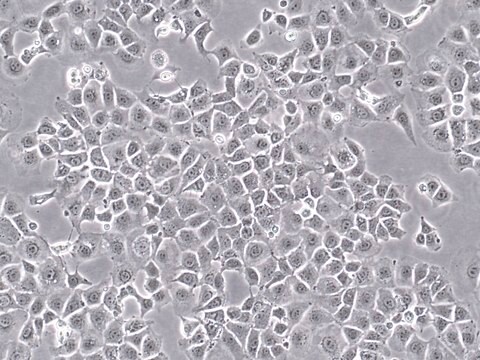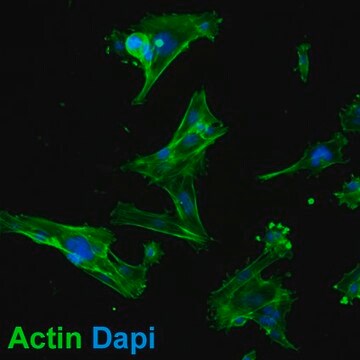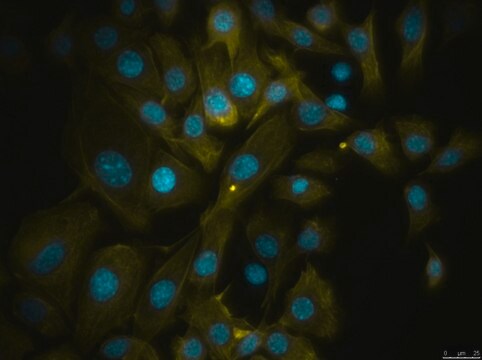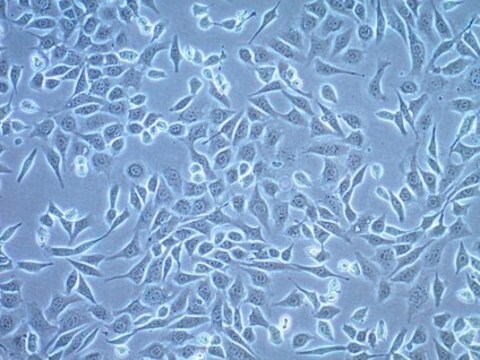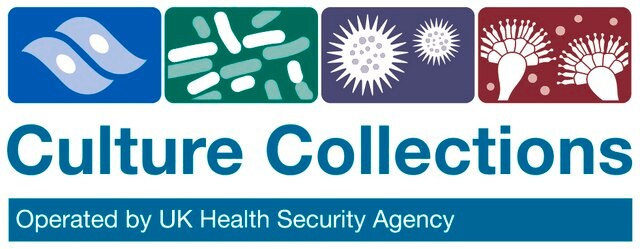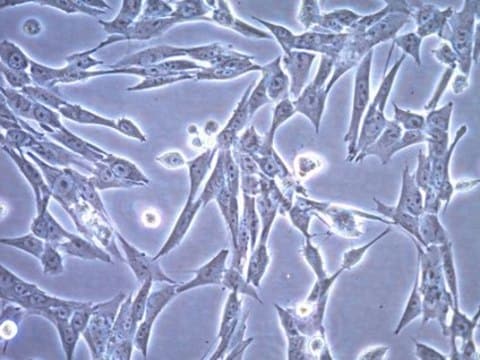推薦產品
產品名稱
TS/A Mouse Mammary Adenocarcinoma Cell Line, TS/A mouse mammary adenocarcinoma cell line is a well characterized and highly published model for breast cancer research.
生物源
mouse
技術
cell culture | mammalian: suitable
運輸包裝
ambient
一般說明
Metastasizing (stage IV) breast cancers have the lowest survival rate among all stages of breast cancer. Metastases may take on a range of morphologies in their new locations, complicating diagnosis and decisions on courses of treatment. Tumor cell lines that mimic the in vivo behavior of metastasizing cancers are thus critical tools in breast cancer research.
TS/A is a highly metastatic mouse mammary adenocarcinoma cell line exhibiting a marked degree of morphological heterogeneity in culture, with a range of differentiated cell types from epithelial-like to fibroblast-like (1). TS/A cells express estrogen receptor and colony-stimulating factor and are negative for the adhesion protein ICAM-1 (2,3). The TS/A cell line is a well-characterized and highly published model for tumor metastasis and heterogeneity and is a popular tool for studies of immunological gene therapy (4,5). It may also be used as a syngeneic mouse model of breast cancer.
The TS/A cell line was isolated from a mammary adenocarcinoma that arose spontaneously in a BALB/c female mouse (1).
The TS/A cell line was isolated from a mammary adenocarcinoma that arose spontaneously in a BALB/c female mouse (1).
細胞系描述
Cancer Cells
應用
Research Category
Cancer
Oncology
Cancer
Oncology
This product is intended for sale and sold solely to academic institutions for internal academic research use per the terms of the “Academic Use Agreement” as detailed in the product documentation. For information regarding any other use, please contact licensing@emdmillipore.com.
品質
• Each vial contains ≥ 1X10⁶ viable cells.
• Cells are tested negative for infectious diseases by a Mouse Essential CLEAR panel by Charles River Animal Diagnostic Services.
• Cells are verified to be of mouse origin and negative for inter-species contamination from rat, chinese hamster, Golden Syrian hamster, human and non-human primate (NHP) as assessed by a Contamination CLEAR panel by Charles River Animal Diagnostic Services.
• Cells are negative for mycoplasma contamination.
• Cells are tested negative for infectious diseases by a Mouse Essential CLEAR panel by Charles River Animal Diagnostic Services.
• Cells are verified to be of mouse origin and negative for inter-species contamination from rat, chinese hamster, Golden Syrian hamster, human and non-human primate (NHP) as assessed by a Contamination CLEAR panel by Charles River Animal Diagnostic Services.
• Cells are negative for mycoplasma contamination.
免責聲明
Unless otherwise stated in our catalog or other company documentation accompanying the product(s), our products are intended for research use only and are not to be used for any other purpose, which includes but is not limited to, unauthorized commercial uses, in vitro diagnostic uses, ex vivo or in vivo therapeutic uses or any type of consumption or application to humans or animals.
儲存類別代碼
12 - Non Combustible Liquids
水污染物質分類(WGK)
WGK 2
閃點(°F)
does not flash
閃點(°C)
does not flash
分析證明 (COA)
輸入產品批次/批號來搜索 分析證明 (COA)。在產品’s標籤上找到批次和批號,寫有 ‘Lot’或‘Batch’.。
A Allione et al.
Cancer research, 54(23), 6022-6026 (1994-12-01)
To evaluate the efficacy of vaccinations with cytokine-gene-transduced tumor cells, BALB/c mice were challenged with 1 x 10(5) parental cells of a syngeneic adenocarcinoma cell line (TSA-pc). No protection was observed in mice immunized 30 days earlier with 1 x
G Nicoletti et al.
British journal of cancer, 52(2), 215-222 (1985-08-01)
We investigated the presence of colony-stimulating factor (CSF) in supernatants obtained from TS/A, a new metastatic murine cell line, and from its high-and low-metastatic clonal derivatives (E and F clones, respectively). TS/A cells produced a CSF in vitro that induced
Ai Sato et al.
STAR protocols, 2(2), 100488-100488 (2021-05-28)
Here, we describe an immunofluorescence (IF) microscopy-based approach to quantify cytosolic double-stranded DNA molecules in cultured eukaryotic cells upon the selective and specific permeabilization of plasma membranes. This technique is compatible with widefield microscopy coupled with automated image analysis for
F Cavallo et al.
European journal of immunology, 25(5), 1154-1162 (1995-05-01)
Although the transfection of B7-1 cDNA into a few mouse tumor cell lines can induce anti-tumor T cell immunity, its expression alone is ineffective in many other tumor cell lines tested. We were interested to study what factors limit B7-1
我們的科學家團隊在所有研究領域都有豐富的經驗,包括生命科學、材料科學、化學合成、色譜、分析等.
聯絡技術服務